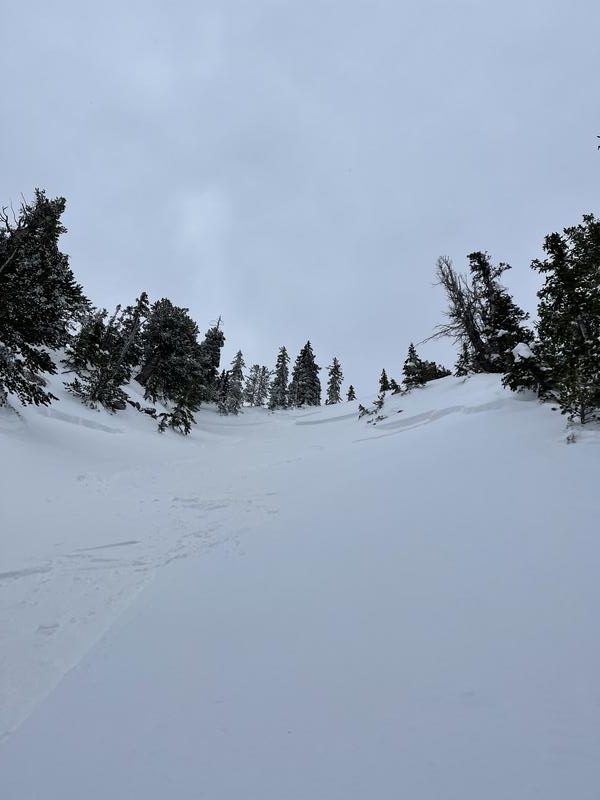Strong winds with lots of new snow to move around have drastically increased the potential of triggering wind slab avalanches in northern Utah this week, where one snowboarder was caught and carried by a slide on Kessler Peak on Sunday in the Wasatch Mountains. According to the Utah Avalanche Center, there were 10 avalanches reported from backcountry skiers and riders yesterday in Utah. The Kessler Peak avalanche occurred on the prominent slide path known as Argenta, and the snowboarder documented a high-quality video of the experience.
In the footage, the snowboarder was shown riding what appeared to be beautiful, untouched powder when he kicked off a wind slab that carried him down the slope at high speeds. In an observation submitted to the Utah Avalanche Center, the rider observed that the avalanche was not very deep, approximately only 5″, which shows the power that even a relatively small slide can have in steep terrain. Had the rider been carried into a tree by the avalanche, the situation could have had an entirely different outcome. Thankfully, he was not injured in the avalanche and was able to share his observation.

The rider detailed his experience in the following observation:
Today we dropped into Greaseball Couloir just north of the summit of Kessler Peak with the plan to ride out Argenta. On our way up, we dug a snowpit to test stability and found no deep instabilities in the snow structure. As we approached the ridge of Kessler we noticed a lot of wind coming over the ridge and depositing on the North face. We did some stability stomps and were unable to get anything to propagate or observe any shooting cracks. As we traversed from the summit of Kessler to the entrance of the line, we started noticing cross-loading beneath the top of the couloir which was causing some strange wind pockets and small cornices. To test the stability of the cross-loaded surface, I stood back and stomped at the base of a cornice about the size of a small fridge. The cornice broke and dropped onto the slope without causing any propagation on the slope below. Outside the cross-loading, the majority of the wind gusts were coming up the couloir and depositing snow onto the East Face of Kessler. Which made us believe that there likely wasn’t any widespread wind loading issues in the couloir proper.
I descended first and dropped into the hanging bowl, after making a heel-side turn, an isolated wind slab broke loose below and above me which knocked me off my feet and took me for a ride. I was able to keep the majority of my body above the snow and was able to radio my partner that I was sliding with the debris. I made swimming motions with my arms and kicked my board to help keep me on top. After about 300 feet, I was able to slow down and stop, while the rest of the debris released below me. After regrouping, we descended the debris. The slope slid about 1,300 feet.
Mistakes / Learnings:
- Respect the wind. Even a small “manageable” wind pocket can break and carry you a long way in steep terrain with long runouts.
- Cross-loading is serious. I had read the avy forecast and knew that wind was a problem, but I did not anticipate cross-loading to be as obvious as a problem, as this is less common in the Wasatch. Lesson learned.
- Make a ski cut. I think I could have mitigated some hazard had I made a ski cut before dropping onto the hanging snow field.
To learn more about avalanche danger in Utah, visit the Utah Avalanche Center’s forecast page.